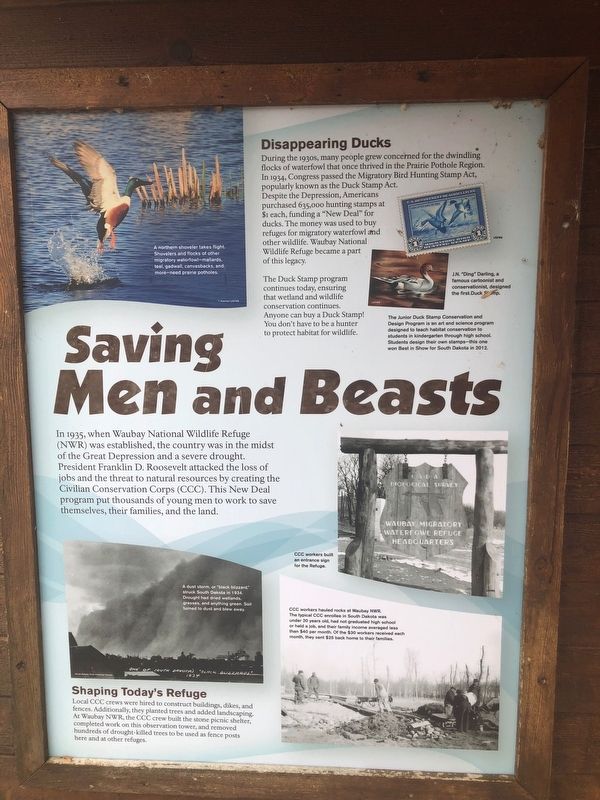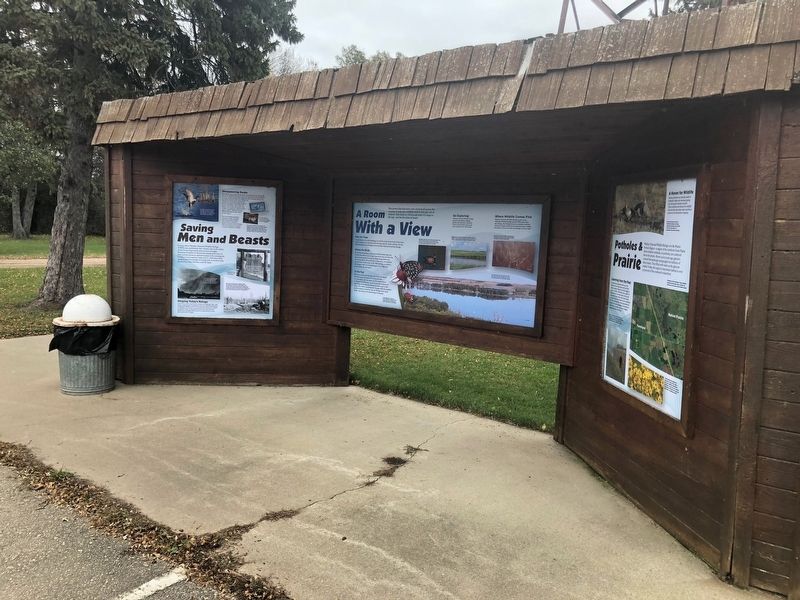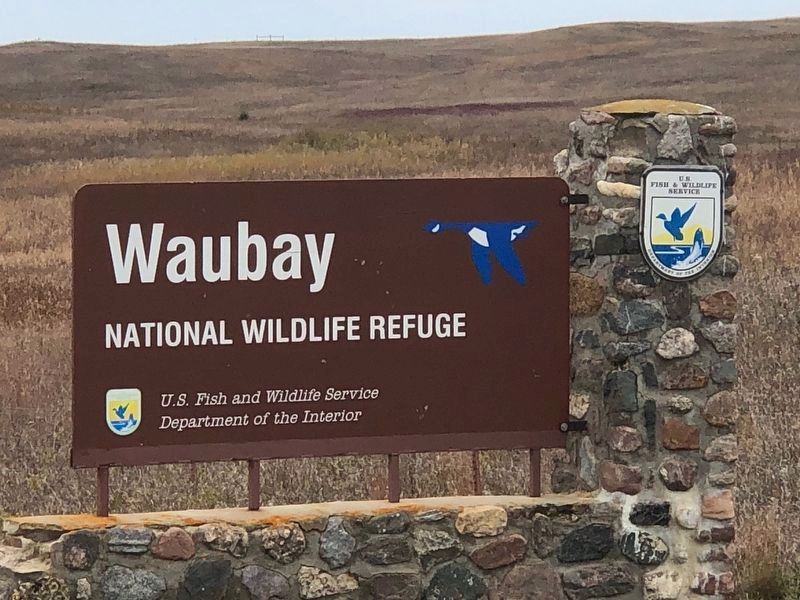Near Waubay in Day County, South Dakota — The American Midwest (Upper Plains)
Saving Men and Beasts
In 1935, when Waubay National Wildlife Refuge (NWR) was established, the country was in the midst of the Great Depression and a severe drought. President Franklin D. Roosevelt attacked the loss of jobs and the threat to natural resources by creating the Civilian Conservation Corps (CCC). This New Deal program put thousands of young men to work to save themselves, their families, and the land.
(Picture Inset)
A dust storm, or "black blizzard", struck South Dakota in 1934. Drought had dried wetlands, grasses, and anything green. Soil turned to dust and blew away.
Shaping Today's Refuge
Local CCC crews were hired to construct buildings, dikes, and fences. Additionally, they planted trees and added landscaping. At Waubay NWR, the CCC crew built the stone picnic shelter, completed work on this observation tower, and removed hundreds of drought-killed trees to be used as fence posts here and at other refuges.
(Picture Inset)
CCC workers built and entrance sign for the Refuge.
(Picture Inset)
CCC workers hauled rocks at Waubay NWR. The typical CCC enrollee in South Dakota was under 20 years old, had not graduated high school or held a job, and their family income averaged less than $40 per month. Of the $30 workers received each month they sent $25 back home to their families.
Disappearing Ducks
During the 1930s, many people grew concerned for the dwindling flocks of waterfowl that once thrived in the Prairie Pothole Region. In 1934, Congress passed the Migratory Bird Hunting Stamp Act, popularly known at the Duck Stamp Act. Despite the Depression, Americans purchased 635,000 hunting stamps at $1 each, funding a "New Deal" for ducks. The money was used to buy refuges for migratory waterfowl and other wildlife. Waubay National Wildlife Refuge became a part of this legacy.
The Duck Stamp program continues today, ensuring that wetland and wildlife conservation continues. Anyone can buy a Duck Stamp! You don't have to be a hunter to protect habitat for wildlife.
(Picture Inset)
A northern shoveler takes flight. Shovelers and flocks of other migratory waterfowl-mallards, teal, gadwall, canvasbacks, and more-need prairie potholes.
(Picture Inset)
J.N. "Ding" Darling, a famous cartoonist and conservationist, designed the first Duck Stamp.
(Picture Inset)
The Junior Duck Stamp Conservation and Design Program is an art and science program designed to teach habitat conservation to students in kindergarten through high school. Students design their own stamps - this one won Best in Show for South Dakota in 2012.
Topics and series. This historical marker is listed in these topic lists: Animals • Charity & Public Work. In addition, it is included in the Civilian Conservation Corps (CCC) series list. A significant historical year for this entry is 1935.
Location. 45° 25.526′ N, 97° 19.762′ W. Marker is near Waubay, South Dakota, in Day County. Marker is on Waubay Refuge Entrance Road. The marker is two miles over the causeway from the park entrance off 466th ave. Touch for map. Marker is in this post office area: Waubay SD 57273, United States of America. Touch for directions.
Other nearby markers. At least 8 other markers are within 9 miles of this marker, measured as the crow flies. A Room with a View (here, next to this marker); Potholes and Prairie (here, next to this marker); Waubay National Wildlife Refuge (about 800 feet away, measured in a direct line); Changes on the Land (approx. ¾ mile away); Waubay Wetland Management District (approx. 1.1 miles away); a different marker also named Waubay National Wildlife Refuge (approx. 1.1 miles away); Chief Bluedog (approx. 2.2 miles away); Roberts County / Day County South Dakota (approx. 8.1 miles away). Touch for a list and map of all markers in Waubay.
Credits. This page was last revised on October 22, 2018. It was originally submitted on October 22, 2018, by Ruth VanSteenwyk of Aberdeen, South Dakota. This page has been viewed 416 times since then and 15 times this year. Photos: 1, 2, 3. submitted on October 22, 2018, by Ruth VanSteenwyk of Aberdeen, South Dakota. • Andrew Ruppenstein was the editor who published this page.


